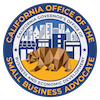Publisher: Kelly Burkart – Posted on 03/08/2013
The U.S. workplace has never been so diverse, not only in background and culture, but also in age. Currently there are four generations working side by side. This can be a challenge for employers. Understanding what the different generations offer and embracing each age group’s strengths is critical if you want to maintain a good working environment.
The first challenge of working with multiple generations is understanding what drives each and how to keep them satisfied.
Traditionalists, born 1922-1945
Although most are retired, labor shortages (of experienced workers) have brought many traditionalists back to the workplace.
- Hot buttons: Have a wealth of experience and knowledge which they are eager to share.
- Characteristics: loyal, experienced, value courtesy
- Challenges: may need more orientation and training especially with technology
- Preferred communication method: written memo or phone call
Baby Boomers, born 1946-1964
The largest group, baby boomers will be retiring in the next decade and have spent their entire careers at a handful of jobs or companies.
- Hot buttons: Work driven, they value integrity, security, and structure. They expect recognition of their experience and knowledge.
- Characteristics: dependable, loyal, experienced
- Challenges: not as experienced with technology and sometimes resistant
- Preferred communication method: phone calls, email during work hours
Gen X, born 1965-1980
Unlike Boomers, many Gen X-ers grew up with two working parents or in single parent households. TV and video games, rather than outdoor play, took up their leisure time.
- Hot buttons: They value time off, flexible schedules and telecommuting.
- Characteristics: works hard and plays hard, uses technology and other resources to work smarter rather than longer
- Challenges: keep technology updated to keep them happy
- Preferred communication method: cell phone calls during work hours
Gen Y or Millennials, born 1981-2000
This is the youngest, fastest-growing group. They value their leisure time, but are comfortable blurring the line between work and free time.
- Hot buttons: They value education and expect promotions, flexibility, recognition, and balance between work and home.
- Characteristics: grew up using technology, creative, independent thinkers, personal and career goals are connected
- Challenges: want maximum access to technology, can be difficult to retain because they won’t hesitate to change jobs or careers when dissatisfied.
- Preferred communication method: texting anytime
Once you understand what makes each generation tick, the second challenge is getting them to work together in relative harmony. These are the basics you need:
Education. Don’t assume people from different generations understand each other. You need to get beyond “parent-child” (or “grandparent-grandchild”) comparisons. Discussions about the differences between generations and how they can complement each other will help break down barriers. Consider building a training program for all employees to learn about generational differences and similarities.
Interaction. Whenever possible, build teams that include more than one generation whether in formal work groups, organizational committees, volunteer work, or planning social events.
Flexibility. Acknowledge different work habits. Some people prefer to be at their desk from 9 to 5. Others are more productive starting work earlier, later, or working from home. Be open to different work styles as long as work is accomplished.
Benefits. Offer a menu of benefits. Not everyone wants the same type of health plan or vacation schedule.
Acknowledging generational differences is important, but remember there are exceptions to every rule. Some Boomers like telecommuting. Some Gen X-ers follow traditional career paths. Some Millennials enjoy reverse-mentoring Traditionalists in new technology. And of course, each individual employee has his or her own strengths. Learning to build on the different approaches and characteristics of each generation can help you as a business owner to foster an invigorating and productive workplace.
Kelly Burkart is a freelance writer from Minneapolis, Minn. While she has spent most of her time writing about financial services the past 15 years, she has also explored and written about everything from cardiovascular health to travel, higher education and sustainable energy practices.
©2013 All rights reserved.





